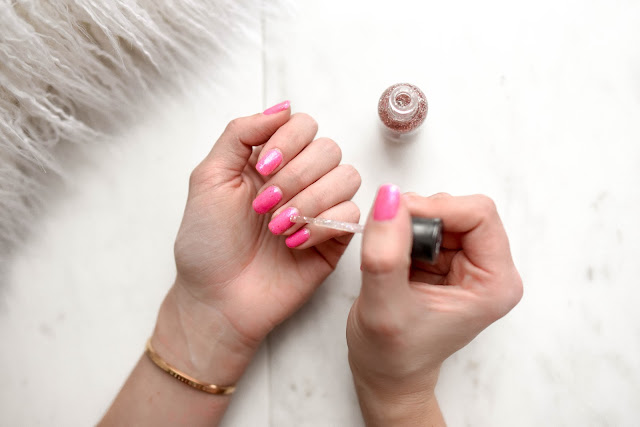8 Ways to Keep Your Nails Healthy
Regular nail care results in healthy nails that you can be proud to take to work or out on the town. Your nail care plan can be simple and inexpensive. In fact, says dermatologist D'Anne M. Kleinsmith, MD, of the William Beaumont Hospital in Royal Oak, Mich., being overly aggressive with cleaning and maintaining nails might actually put your normally strong nails at risk for yeast or bacterial infections. You won't need frequent manicures to maintain good-looking nails if you follow these eight simple tips.
Best Product For Nails : Try Now
1 - Try Biotin
As long as you eat a healthy, varied diet, you don't need any dietary supplements to guarantee strong nails. But, says Dr. Kleinsmith, people with weak nails may benefit from supplemental biotin, a B vitamin. "Biotin has been shown to be helpful for strengthening and growing our nails," she says. Kleinsmith admits she didn't luck into strong nails by birth, and she has had success strengthening them by taking biotin every day.
2 - Enjoy Polish
Wearing nail polish isn't going to harm your healthy nails, although you probably should give your nails a break on the polish periodically. As part of your home manicures, make sure you choose acetone-free nail polish remover when you decide to begin that break. Wear gloves for better nail care when working with your hands, such as when you're gardening or housecleaning, to protect the polish and keep dirt out of your nails.
3 - Moisturize Cuticles
Think of your cuticles like the protective caulking around a bathtub. If you cut them back too far or push them around too aggressively, you damage them. That, in turn, leaves your nail bed open to infection. As part of regular nail care to maintain healthy nails, Kleinsmith advises moisturizing cuticles and not even pushing them back or trimming them at all, even during a professional manicure. Be aware of the signs of infection, including redness, pain, swelling, and even pus in your cuticles and the nearby skin. See a doctor for help treating any infection.
4 - Keep Nails Trimmed
"The fashion trend is to have neat, more natural-looking, shorter nails and not the long talons of the past," notes Kleinsmith. Trimming nails regularly helps you to maintain healthy nails and helps to avoid snagging or breaking. How frequently you trim will depend on how fast your nails grow. Use a fine file to smooth out the edges of your nails. As part of your manicures, you can also lightly buff the surface of your nails, especially if you tend to get ridges.
5 - Clean With a Nail Brush
Many women risk infection with rigorous cleaning under the nails using long, pointy tools, both at home and during manicures. "Women themselves or the manicurist are trying so diligently to clean under the nail that they end up with a kind of a gap between the nail and the nail bed," Kleinsmith explains. This kind of aggressive nail care is an open door to bacterial or fungal infections. Instead, scrub gently with an old-fashioned nail brush for healthy nails.
6 - Wear Dish Gloves
Frequently immersing hands in hot, soapy water to wash dishes can weaken even strong nails, mostly because this process dries them out along with the rest of the skin on your hands. Protective nail care calls for wearing gloves to protect your hands while you scrub. Interestingly, notes Kleinsmith, swimmers who are usually immersed in cooler water do not seem to have the same kind of challenge to their strong nails.
Read Also - 10 Skin Care Tips
7 - Minimize Manicures
Keep manicures simple to preserve healthy nails. "Save a few dollars," says Kleinsmith. "Go in, get your nail polish removed, have them shape your nails — not real brutally — get a fresh coat, and be done with it." Skip the acrylic nails, which ultimately could lead to more infections, and be aware that there is a small risk of skin cancer from the UV light that affixes solar nails. Wear sunscreen on your hands if you are going to be putting them under the light.
Best Product For Nails : Try Now
8 - Take Infections Seriously
Smoothing ragged edges and wrapping a broken nail in an adhesive bandage are fine, but if you see signs of infection, check in with your doctor for the needed nail care. You'll probably recognize the signs of a bacterial infection (redness, swelling, and pain), but you might miss the early signs of a nail fungal infection, such as puffy, red, irritated skin around the nail bed. Fungal infections could improve with an over-the-counter antifungal treatment, but they sometimes require prescription medications — for optimal nail care, get medical attention when healthy nails are at risk.



.jpg)




